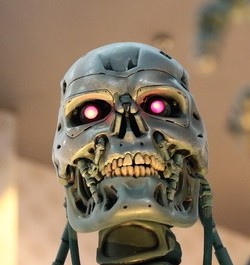Adaptability is Transforming Robotics
Blog: Apriso Blog
 It’s more than 50 years since the first industrial robot went to work. Today some 1.5 million are in use around the world, yet there is not a single Jetson’s Rosie or (fortunately) T800 Terminator among them. The reality is, despite a public perception that robots think and reason, none of them are anything more than a machine, obeying programmed instructions. Though over the next few years that may start to change.
It’s more than 50 years since the first industrial robot went to work. Today some 1.5 million are in use around the world, yet there is not a single Jetson’s Rosie or (fortunately) T800 Terminator among them. The reality is, despite a public perception that robots think and reason, none of them are anything more than a machine, obeying programmed instructions. Though over the next few years that may start to change.
Structured Environments
Industrial robots are impressive machines, able to lift huge forgings, weld car bodies, or assemble components almost too small to see. Capable of astonishing acts of precision and dexterity, they will follow a programmed path at the same speed and without deviation, hour after hour, yet have no intelligence.
This ability to perform repetitive motions is what makes robots so useful. Around the world, robots are performing difficult, dirty or dangerous tasks. Welding and painting automobiles, stacking pallets and packaging pharmaceuticals are just a few examples. Perhaps the question to ask is, why aren’t there more?
The problem is, while robots are flexible, they are not adaptable. Flexible in robot terms means it can be quickly taught a new set of motions. Adaptable would mean that if a part arrived upside down the robot could recognize this and correct it. Or, in a more extreme example, it might mean altering a motion path to compensate for wear in a joint motor or bearing much, as a man with an injured foot adopts a limp.
Robots handle this lack of adaptability by having a highly structured work environment. Every part it will pick up or work on must be presented in the same position every time. That adds cost and complexity, which is probably one reason there aren’t more in use.
Adding Senses
Humans use sight and touch to deal with unstructured environments. With two eyes, humans determine the location and size of objects around them and their ability to sense and apply force lets them crack an egg or hammer a nail.
Robots have gradually been acquiring these senses. Growing numbers are sold with vision systems for locating shapes and objects. Single cameras determine orientation, while laser triangulation and stereo systems add depth perception. As a result, the need for repeatable work piece presentation is declining, lowering costs and increasing flexibility. Systems can even track individual parts on a moving conveyor, orienting the robot’s grippers to pick each one for packing or assembly.
Forcing sensing is on the rise, too — especially in assembly and edge trimming. When the end-of-arm tooling is equipped with force sensors, the robot can tell when an assembly movement is meeting resistance and adjust accordingly. Systems are in use that assemble and mesh gears in this way. Force sensing also lets a robot apply a constant load to an uneven edge, as when deburring castings.
The Future
For several years, NIST has supported work on adaptable robots that could assist human production workers, their justification being, “When people and robots can work together safely in the same space, a whole new class of more sophisticated jobs can be accomplished—inspecting, assembling parts into complex shapes, fetching tools or materials, and more.”
Three areas to watch are:
- Collaborative robotics
- “Smart” grippers
- “Deep learning”
A collaborative robot is one able to work alongside and interact with people rather than being caged. Such robots are now available. Some use advanced sensors and safety-rated controllers to react to a human in its space, while others employ power-and-force-limiting techniques to avoid causing injury.
Grippers are advancing, too. Once mostly pneumatic, grippers are now electrically powered, incorporating servo motors for precise control. Add force sensing, and a powerful machine is able to grasp the most delicate objects. Further are flexible, snake-like grippers that wrap themselves around an object to be lifted, like those under development at the University of Bristol.
Also underway at universities around the world is work on giving robots a form of situational awareness. Referred to as “deep learning,” this has garnered much media coverage and promises to make robots truly adaptable. Already, research robots have been unveiled that learn by trial and error and adapt to injuries.
Neither Rosie nor the T800 Terminator are on the horizon, yet as adaptability starts to transform robotics, who can predict the future?
If you liked this article, here are others you might also find interesting:
- Are Robots About to Take Over E-commerce Warehouses?
- Robots Improve Productivity – But at what Cost?
- Manufacturing Operations: Managing the Robots
- Transform Safety Policies as Robotics Expand on Plant Floor
Leave a Comment
You must be logged in to post a comment.







